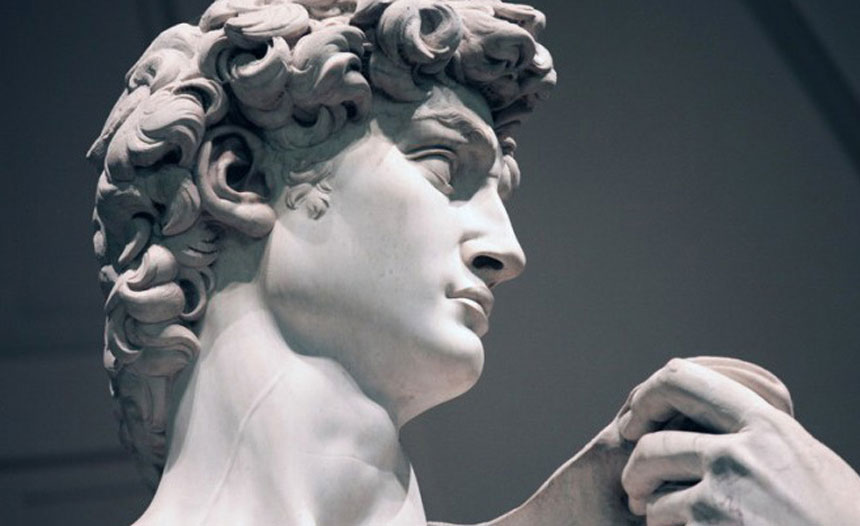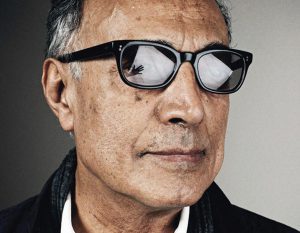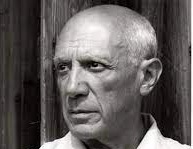By: Mahdi Shadizadeh,Hamid Hadinezhad
Painting
Psychological processes in aesthetics keep ideology away from art. The genesis of the work of art in the artist’s mind poses challenges to our understanding. Yet, what is axiomatic is that the work of art is created from individual interpretations of objective reality that pass through cognitive layers to be realized in a subtle process. What distinguishes an interpretation from a report is the emotions and mental and psychological dimensions. In the production of technical and skill-oriented craft, the absence of perceptual interactions leads to an artificial product. Intellectual abilities play an important role in forming subtle perceptions of our surroundings, and intuition is the reason for the absence of ideology and political orientations in art.
A good example is Guernica by Picasso, which simultaneously represents the artist’s tendency towards stories of war and social and political tension and at the same time devoid of ideological dimensions. As an artist with social concerns, Picasso makes interpretations to create his work. He leverages aesthetic gains of realism, expressionism and cubism and develops an outstanding work in the right time and place. Guernica is in essence a revolutionary work of art as it juxtaposes contrasting elements and adopts paradoxical rhythm to create harmony while the horizontal frame represents peace. War is transformed into visual elements when the painter’s passion as a realist to express their social inclinations is blended with their avoidance of emotional and superficial actions, which poses a challenge as it leads to behavioral and structural contradictions.
Guernica successfully delivers artistic expression rather than simply reporting. If description is placed in the story setting, it turns into a news report, and if it constructs form and structure, it represents personal attitudes and introduces the artist’s disposition and expression. Interpretation in structure is accompanied by behavior, growing and flourishing in form and thought. As a result, visual elements flow in the story. Guernica addresses conflicts, contradictions and the story of war. A formidable rhythm, intense dark and light forces, presence and opening of knots, application of triangular shapes, dark and white stylistic devices, and the contrast- filled space draw the viewer in. Guernica is a situation that Picasso describes avoiding reports of the location.
Sculpture
Art has long been wielded to further the causes of ideological contrast- states and political parties and organizations. However, creation of art in the absence of freewill leads to objects that lack feeling and perception. dogmatism. While thought can be shaped by social influences, artistic expression only develops with the artist’s emotions and disposition, free from restrictions, coercion and political affiliations that debase thought.
Churches as political and religious institutions have generated confrontations on the part of artists in different periods. An example of this is the Medici family who commissioned Bible and Torah narratives to Michelangelo to decorate the Sistine Chapel in the late 15th and early 16th centuries. The artist’s creativity and humanistic attitude, however, led to a creation that imposed a mythological burden for a religious framework.
Michelangelo’s works demonstrate Greek influences in execution, and a radically humanistic viewpoint. He broke taboos and replaced them with eternal mythologized forces with strong muscles. Michelangelo decorated the Sistine ceiling with his idealized, unholy figures in a religious atmosphere propagated by the state, causing a paradox in the church. The Sistine Church, where the most important Christian rituals are carried out, still stands with Michelangelo’s work, free from innocence. Any religious expression becomes a disorder and is realized and presented anew through an artistic and intellectual mechanism. The imposing muscular figures and dark and contrasting colors recall extraterrestrial beings.
The disregard for the common proportions of the era in adoption of the figures and the biting and harsh tone towards the authenticity of Bible messages point to the artist’s creative and avant-garde mind. The gender-neutrality of the figures and their depiction as heroes in a continuous paradigm suggests the dominance of Michelangelo’s view over the ideological message of religion. The result is a paradox, as Michelangelo clearly worships mythology. His mythology, just like the spiritual paintings, requires worship and praise. Despite the iconoclasm, the question remains; the move from religious determinism to the invincible mythological giants reflects humanistic dogmatism.
Narrators of earth and hope
Forough Farrokhzad portrays the innermost female affairs in the most human form. Though not a woman in her poetry, she depicts femininity at its highest. To her, poetry is a haven and a spiritual need. Forough transforms the most mundane objects into the richest and purest works of art and seeks herself as a theme in her poetry. Poetry is not a circumstance but a historical destiny as her character and identity are shaped by her poetry and vision. Poetry is a necessary tool for expression, not the mechanical act of speaking. She gives the reader a glimpse of her personal life through words; an imaginary and individual world so simple and pure that it disregards gender. She is the narrator of pain, suffering, loneliness and introversion.
In her movie, “The House is Black”, we are faced with shocking images in a leper colony. The location is a mental space for her. She takes advantage of the setting to express her interpretation of the surroundings. She creates sharp, long lights among these dark masses.
Art as an industry doesn’t shape Forough. Rather, she claims her environment and blends it with her mentality and personal view. Perhaps the other figure whose abilities in creating images parallel hers is Abbas Kiarostami, who offers the same rich simplicity. Kiarostami tends to adopt nature and human presence, which brings to mind painting and photography. Just like Forough, he turns everyday objects into art and records his deepest philosophical views through the most delicate tools of expression.
The road in Kiarostami’s trilogy, which begins with the movie “Where is the Friend’s house?” is in fact his worldview. This goes on throughout the child’s journey to reach the ‘friend’s house’. In the last scene, the hill, the road and the tree morph into a triangle. In “The Taste of Cherries”, “Under the Olive Trees” and “The Wind Will Carry Us”, the dirt road, the location inside the car, and the human presence create another triangle.
Kiarostami retells the story of mankind in nature with his unique understanding and poetic attitude. The winding road on a hill in “Where is the Friend’s house?”, and the single tree masterfully portray life, which is synonymous with hope and growth.
Nature is a recurrent theme in Kiarostami’s works because it helps him sidestep the censorship problem. Kiarostami’s films draw inspiration from the likes of Yasujiro Ozu and Robert Bresson, who search for themselves and the lost identity of the contemporary man. Use of large glasses that symbolize distance and closeness at the same time in “Report” is a clear impact of Bresson on him.







